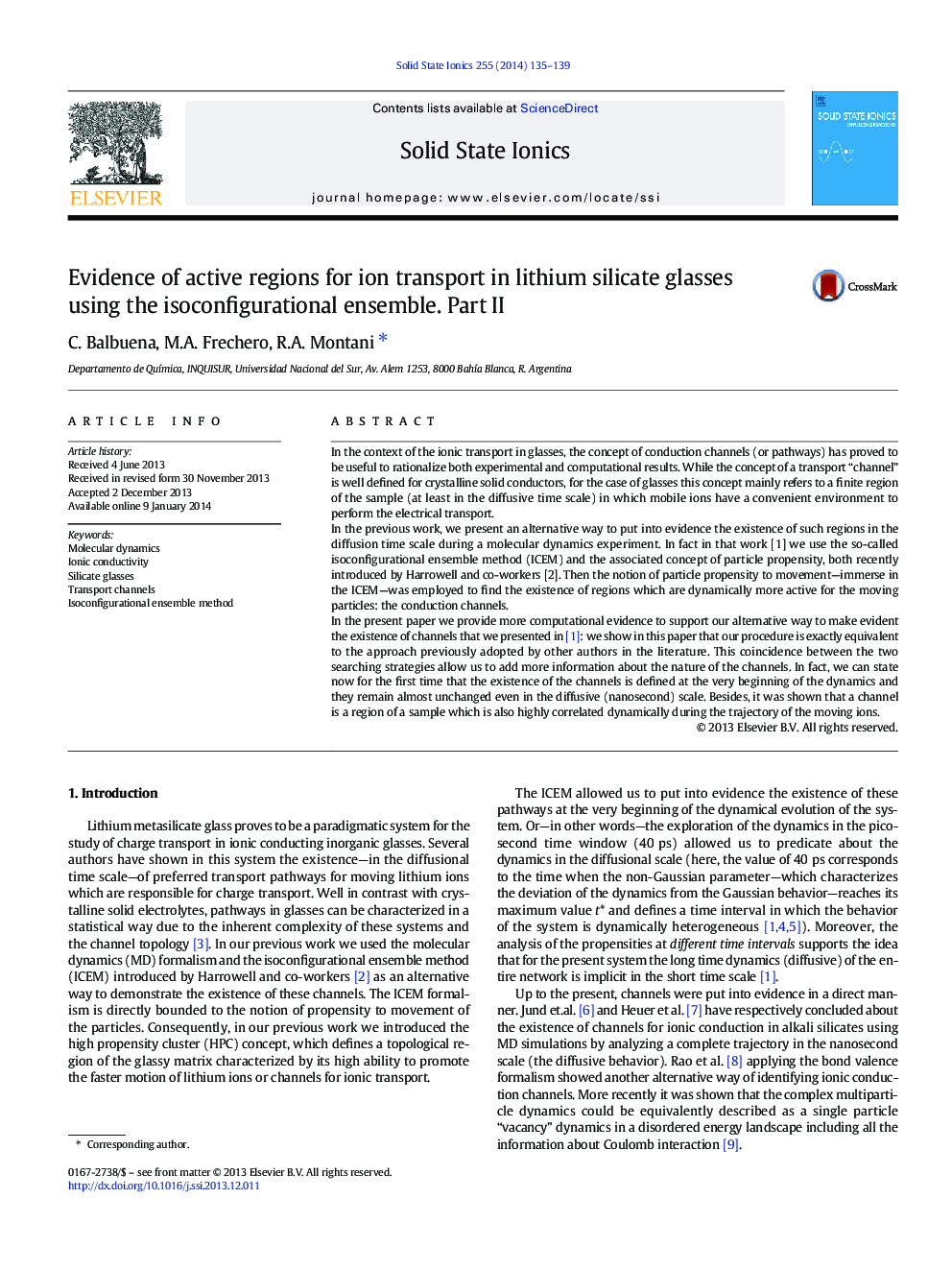| کد مقاله | کد نشریه | سال انتشار | مقاله انگلیسی | نسخه تمام متن |
|---|---|---|---|---|
| 1295938 | 1498287 | 2014 | 5 صفحه PDF | دانلود رایگان |
• We present an alternative way to describe “channels” for ionic transport in glasses.
• We use the so-called isoconfigurational method and the concept of particle propensity.
• We show the existence of high propensity clusters (HPCs) for Li ions in Li2SiO3 glass.
• A HPC consists of a network of sites quickly explored by the diffusing Li ions.
• A HPC has the topological characteristics inherent to the ionic “channels” in glasses.
In the context of the ionic transport in glasses, the concept of conduction channels (or pathways) has proved to be useful to rationalize both experimental and computational results. While the concept of a transport “channel” is well defined for crystalline solid conductors, for the case of glasses this concept mainly refers to a finite region of the sample (at least in the diffusive time scale) in which mobile ions have a convenient environment to perform the electrical transport.In the previous work, we present an alternative way to put into evidence the existence of such regions in the diffusion time scale during a molecular dynamics experiment. In fact in that work [1] we use the so-called isoconfigurational ensemble method (ICEM) and the associated concept of particle propensity, both recently introduced by Harrowell and co-workers [2]. Then the notion of particle propensity to movement—immerse in the ICEM—was employed to find the existence of regions which are dynamically more active for the moving particles: the conduction channels.In the present paper we provide more computational evidence to support our alternative way to make evident the existence of channels that we presented in [1]: we show in this paper that our procedure is exactly equivalent to the approach previously adopted by other authors in the literature. This coincidence between the two searching strategies allow us to add more information about the nature of the channels. In fact, we can state now for the first time that the existence of the channels is defined at the very beginning of the dynamics and they remain almost unchanged even in the diffusive (nanosecond) scale. Besides, it was shown that a channel is a region of a sample which is also highly correlated dynamically during the trajectory of the moving ions.
Journal: Solid State Ionics - Volume 255, 1 February 2014, Pages 135–139
